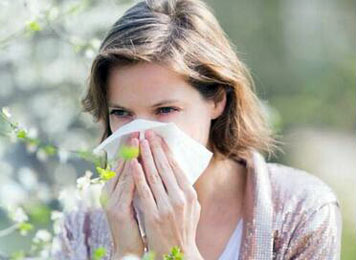
Hay fever is an allergic reaction to pollen and therefore is common in spring and summer. Typical symptoms include itchy eyes, blocked or runny nose, sneezing fits and breathing problems. Some people react in a similar way to house dust and animals such as cats, dogs and horses. In England alone, there may be over 10 million people with hay fever. Most sufferers rely on anti-histamines to get through the pollen season.
On average about 1 person in 90 suffers badly enough to consult a doctor, and many other people have the disorder in a milder form. People are particularly susceptible if they have another allergic condition such as asthma or eczema, or if any such conditions run in the family.
The general increase in conditions such as hay fever and asthma may be related to the increased amount of environmental toxins and pollutants to which we are all becoming more regularly exposed. A combination of pollution in the environment and exposure to household chemicals may weaken the body’s resistance. If this occurs, it lessens the body’s ability to control its response towards allergies.
Hay fever is the name given to pollen allergy. Other terms for hay fever include Seasonal Allergic Rhinitis or Pollinosis. Hay fever or allergic rhinitis, is a chronic inflammation of the nose, throat, and sinuses. It is induced by external irritants, usually pollens carried in the air. Spring hay fever is related to tree pollen, summer to grass pollen and autumn to weed pollen.
Non-seasonal allergies are usually due to household irritants such as dust, animal hair, and droppings of the house dust mite, mould, mildew, insect stings and bites. People with pollen sensitivities have a hard time, as it is difficult to avoid pollen because it is in the air that we breathe. For many people with hay fever, spring and summer represent a real nightmare. A small number of hay fever sufferers experience symptoms that significantly interfere with everyday life and are difficult to control with medication.